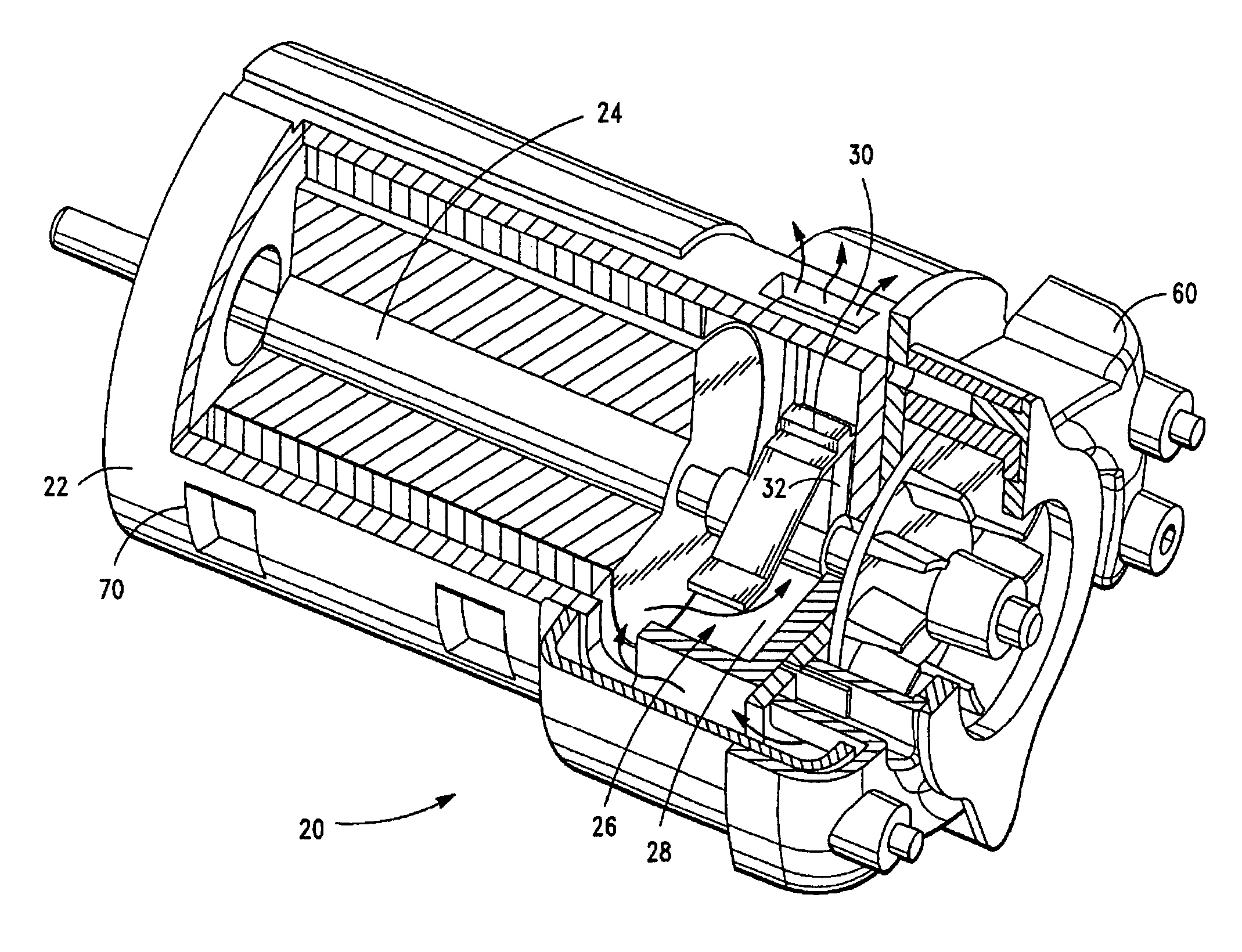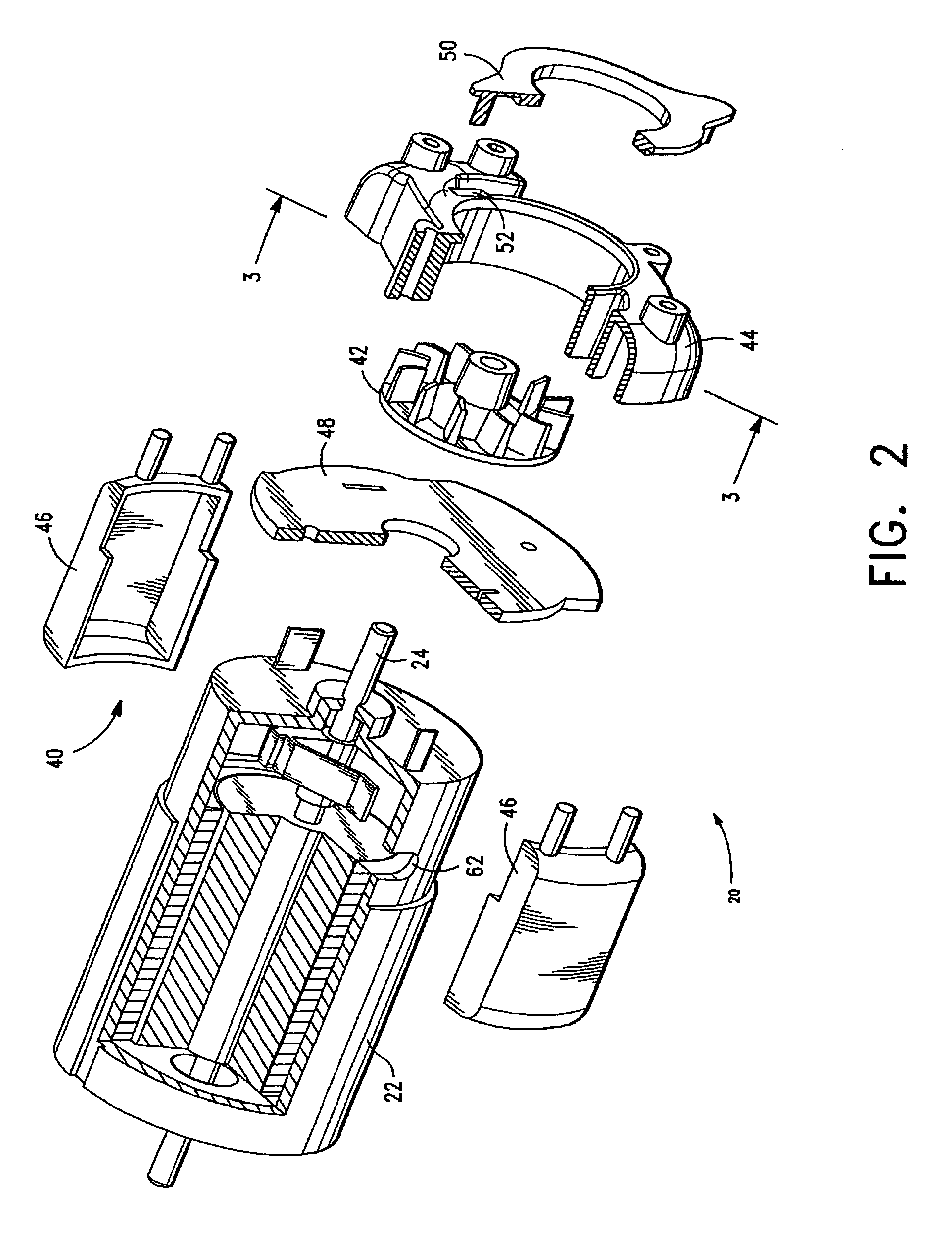Method and structure for cooling an electric motor
a technology of electric motors and cooling methods, applied in the direction of cooling/ventilation arrangements, electrical appliances, dynamo-electric machines, etc., can solve the problems of failure to function, extreme heat build-up, catastrophic failure, etc., and achieve the effect of prolonging the life of the motor and extending the life of the brush
- Summary
- Abstract
- Description
- Claims
- Application Information
AI Technical Summary
Benefits of technology
Problems solved by technology
Method used
Image
Examples
Embodiment Construction
[0033]An exemplary embodiment of the electric motor in accordance with the present invention generally denoted by the numeral 20 will now be described with reference to FIG. 1. The motor 20 includes a stator 22 or housing, an armature 24 or rotor and a brush assembly, generally denoted by the numeral 26.
[0034]The armature 24 includes a commutator 28. Typically, the commutator 28 uses copper segments. However, more modern examples of the commutator 28 include graphite segments.
[0035]The brush assembly 26 includes a brush holder 30 for holding a brush 32 against the commutator 28. The area which the brush 32 contacts the commutator 28 is called the contact area.
[0036]The brush holder 30 holds the brush 32 in place and provides electrical insulation from the housing when the rotor is activated. Supplying power to the motor causes the brush 32 in contact the commutator 28 at the contact area to complete the electrical circuit and cause the armature to rotate.
[0037]The exemplary embodime...
PUM
 Login to View More
Login to View More Abstract
Description
Claims
Application Information
 Login to View More
Login to View More - R&D
- Intellectual Property
- Life Sciences
- Materials
- Tech Scout
- Unparalleled Data Quality
- Higher Quality Content
- 60% Fewer Hallucinations
Browse by: Latest US Patents, China's latest patents, Technical Efficacy Thesaurus, Application Domain, Technology Topic, Popular Technical Reports.
© 2025 PatSnap. All rights reserved.Legal|Privacy policy|Modern Slavery Act Transparency Statement|Sitemap|About US| Contact US: help@patsnap.com



